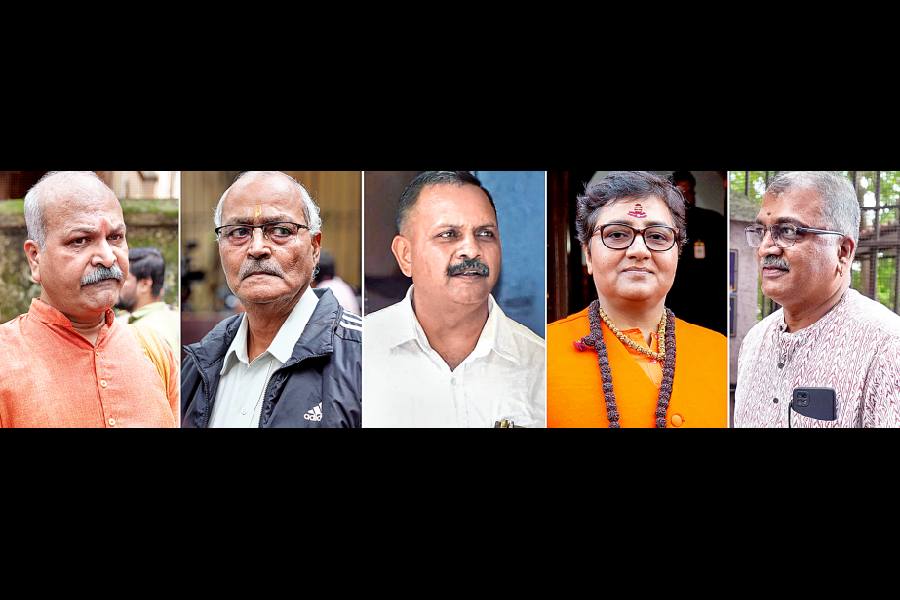
Guwahati, Nov. 12: Assam is paying for a famine that occurred 140 years ago and another about 70 years later, with the development of a genetic condition that leads to diabetes.
A study conducted by the North East Diabetes Society, under the aegis of the Indian Council of Medical Research (ICMR), has revealed that a genetic condition that took root during days of food scarcity has nullified the otherwise healthy food habits of the people of the state. A consistent food deficit also led to the genetic condition.
"The people of Assam, along with West Bengal, Bihar, Maharashtra and South Indian states, share a genetic condition called thrifty gene, which generally develops when over three generations have faced an acute food crisis," endocrinologist and general secretary of the society, Sanjib Medhi, told The Telegraph today.
The Thrifty Gene Hypothesis was first propounded by geneticist James V. Neel of University of Michigan Medical School in Ann Arbor, USA, in 1962. Neel's genotype paradox was based on a population among which diabetes was in very high frequencies. It reflected not only food habits or lifestyle but also that a third factor - gene - played an important role. He proposed that these genes had faced an acute food crisis over the period and had developed a capacity to efficiently collect and process food to deposit fat during a period of abundance in order to provide nutrition during periods of food shortage.
The hypothesis holds true for Assam too, said Medhi.
"Assam was hit by famine and a consistent food crisis in the past, but now, with a constant abundance of food, this genotype efficiently prepares individuals for a famine that did not come. This mismatch between the environment in which the brain evolved and the current environment causes obesity and consequently, diabetes. Otherwise, the food habits here are much better than in other parts of the world," Medhi said.
A normal person requires 2,000kg calories to survive whereas those with thrift genes can survive on 1,500kg calories, he added.
Prodip Kumar Adhyapok, an associate professor of economics in Cotton College, said the great famine of 1876 that originated in southern India because of monsoon failure, hit Assam in late 1878.
"An acute food crisis had originated in Mysore because of crop failure after the late arrival of monsoon. By 1877, the food crisis enveloped most of southern India and Maharashtra. In 1878, it spread to the east and Northeast. Assam was the worst sufferer due to the famine in the Northeast," said Adhyapok. "Assam had maintained a fair per capita income in the 19th century, but income was not fairly distributed. In the plains, the income capacity was three times higher than those who were in the hills, on char and remote areas," he added.
Sheila Bora, a former head of the department of history in Gauhati and Dibrugarh universities, said Assam, despite its own agricultural produce, was hit by the Bengal famine of 1943. "Assam was also under the jurisdiction of the Bengal government at that time, along with parts of Bihar, Jharkhand and Odisha. So, Assam also got hit by the famine," Bora said.
"Most of the people here used to have their own piece of land but due to the prevalent zamindari system in those times, people used to be left with very little food. So, there was a consistent food crisis. The most affected were the people of Goalpara and Barak Valley," she said. "Generally, diabetes because of thrift gene condition occurs when people whose ancestors were from a poor financial background or those whose forefathers had suffered from a food crisis, lead a better lifestyle in the current times. With this condition, they automatically fall in the pre-diabetic stage," said the president of the society, Mihir Saikia.
The study conducted by Indian Council of Medical Research found out that one among 10 persons suffers from diabetes here. Fourteen per cent of the urban population and eight per cent of the rural population in Assam have diabetes. Also, the number of pre-diabetic or the prospective diabetic people is four times higher than the number of actual diabetic people here.
Diabetes has two stages - actual diabetes, which is unpreventable and the pre-diabetes or prospective diabetes, which can be prevented by making changes in lifestyle and food habits.
The pre-diabetics are those who have the symptoms of having diabetes or a genetic condition.










